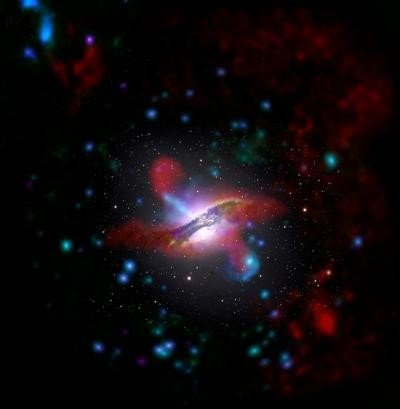LONDON, April 4 (UPI) -- Astronomers say two European Space Agency space observatories have offered new views of the mysterious galaxy Centaurus A and uncovered its cannibalistic past.
Centaurus A is the closest large elliptical galaxy to our own Milky Way at about 12 million light years distance, discovered in the 19th century but hiding many of its secrets until now, scientist say.















